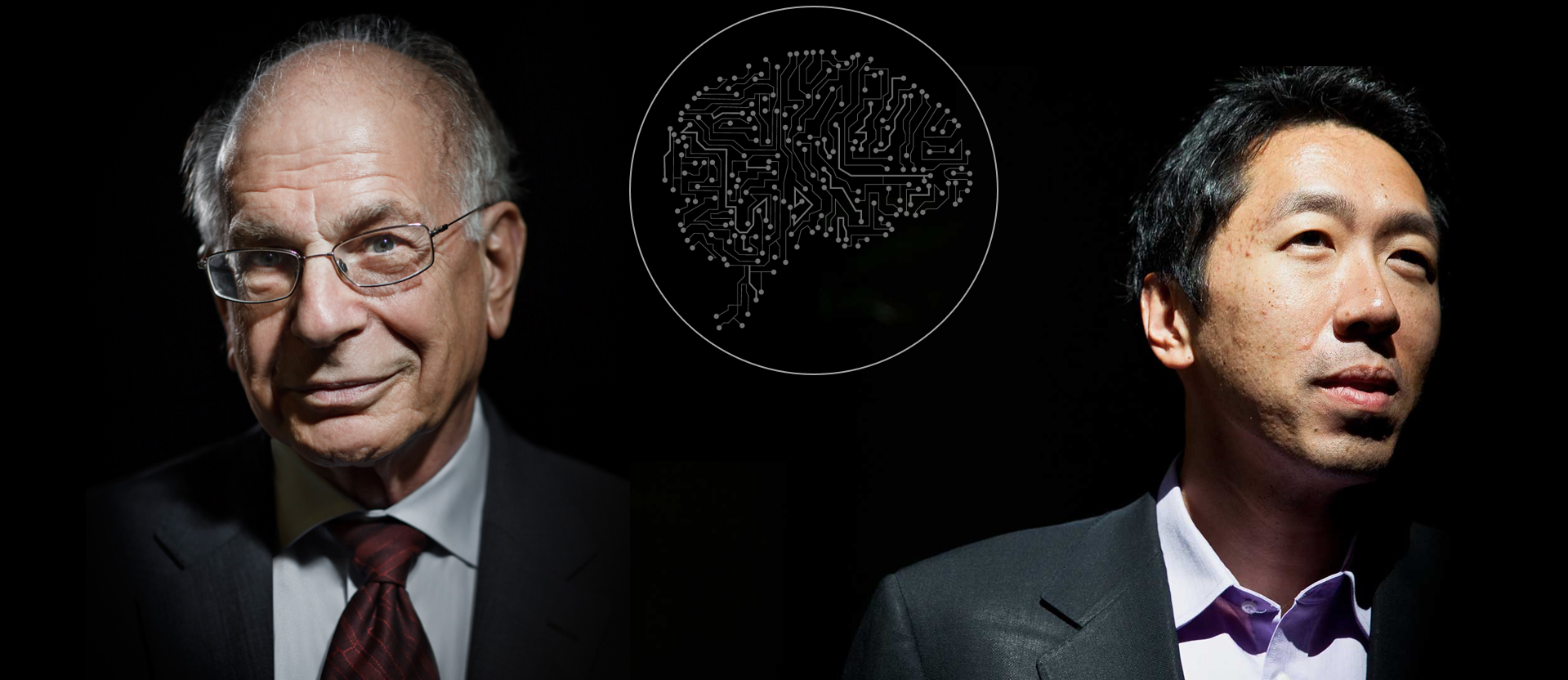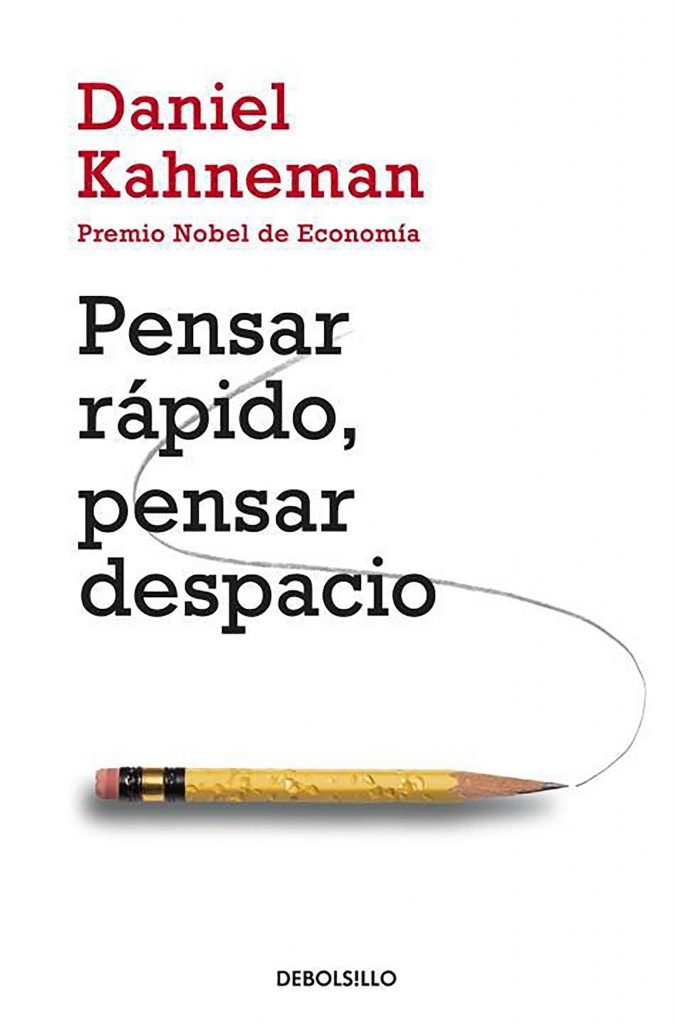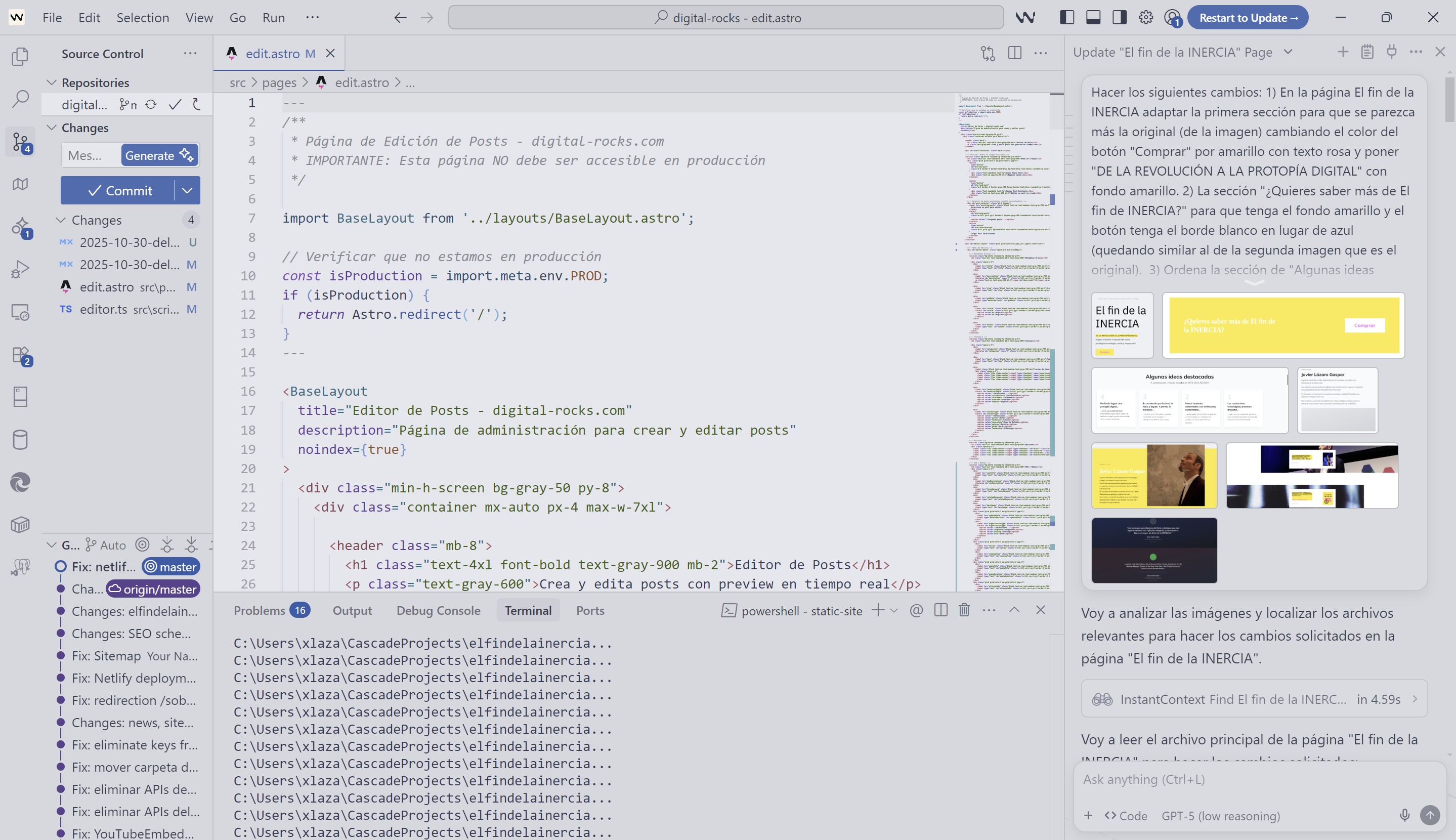Artificial Intelligence vs. Human Intelligence

According to Raymond Kurzweil (Chief Engineer at Google and author of “How to Create a Mind?”), AI will surpass the human brain by 2025 and by 2050 will exceed the sum of all humans combined.
According to Daniel Kahneman (Psychologist and Nobel Laureate in Economics in 2002), Artificial Intelligence has already surpassed Human Intelligence.
In this post, I want to reflect on what this means, on common aspects and differences between Artificial Intelligence vs. Human Intelligence. To do this, I will rely on references to Kahneman and Andrew Ng.
In “Thinking, Fast and Slow”, Daniel Kahneman described his studies on Human Intelligence, its functioning, and main limitations.
In “Artificial Intelligence is the New Electricity,” Andrew Ng explained how Artificial Intelligence is on its way to transforming all industries without exception. In his training courses, Andrew Ng shows us what is currently feasible through Artificial Intelligence.
Therefore, I can think of no better way to approach Artificial Intelligence vs. Human Intelligence than starting from their opinions.
Daniel Kahneman
In case someone is not familiar with him, Kahneman is a psychologist, Nobel Prize winner in Economics in 2002, and, as he shows in numerous statements, an enthusiast of Artificial Intelligence.
While reading his book “Thinking, Fast and Slow”, I thought that many of his concepts associated with Human Intelligence were lessons learned to apply in Artificial Intelligence.
This idea is the origin of this post, but as I researched Kahneman’s statements on Artificial Intelligence vs. Human Intelligence, the post evolved.
In this post, I will use various articles as well as his talks and interviews. You can see all the references at the end. The one from “AI podcast with Lex” by Lex Fridman is particularly interesting.

Kahneman in AI Podcast with Lex
Andrew Ng
To begin with, I thought it would be interesting to contrast his opinion with that of Andrew Ng.
Andrew Ng is a professor at Stanford University and director of its Artificial Intelligence laboratory. He is also the co-founder of Coursera and creator of some of the most impactful online courses and talks on Artificial Intelligence.
Ng was one of the creators of Google Brain in 2011 and Chief Scientist at Baidu.
Like Kahneman, I would highlight his practical sense, being able to ground expectations in what is technically feasible. A virtue that I wish were more common when discussing AI.
In this post, I will use various articles, talks, and interviews of his. You can see all the references at the end. The article “Artificial Intelligence is the New Electricity” is particularly interesting.

Andrew Ng in AI Podcast with Lex
Definition of Artificial Intelligence vs. Human Intelligence
Let’s start by defining Artificial Intelligence and Human Intelligence.
When John McCarthy introduced the term Artificial Intelligence in 1956, he did so in the following way:
“Artificial Intelligence is the science and ingenuity of making intelligent machines, especially intelligent computer programs”
John McCarthy
If the goal is to create intelligent machines, we should ask ourselves what it means for them to be intelligent. According to the RAE: Intelligent is an adjective that means “Endowed with intelligence.”
In that case, what is Intelligence? Let’s ask the psychologist.
“Intelligence is not just the ability to reason; it is also the ability to find relevant material in memory and focus attention when needed,”
Daniel Kahneman
It is interesting that Kahneman gives so much weight to the ability to focus attention and memory rather than solely reasoning.
Does this clarification by Kahneman bring us closer to what is achievable through AI? Certainly, it does not remain a fanciful vision of a Super Artificial General Intelligence.
From a practical standpoint, Andrew Ng believes that:
“Everything a human can decide or execute in less than a second is susceptible to being automated through Artificial Intelligence”
Andrew Ng
Artificial Intelligence vs. Human Intelligence: the 2 Systems
Kahneman defines, in his book “Thinking, Fast and Slow”, 2 Systems of thought:
- System 1 is fast and instinctive. It operates automatically and with very little effort and control.
- System 2 is slow, conscious, and requires effort. It determines the answer to complex questions like 27+52.
These 2 systems do not exist neurologically or psychologically, but they do help understand the functioning of our mind.
We like to think that most of our decisions are thoughtful and come from System 2, but in reality, the influence of System 1 is much greater than that of System 2.

Book in which Kahneman defines the 2 systems of thought
Artificial Intelligence vs. Human System 1
In “Artificial Intelligence is the New Electricity,” Ng emphasizes that any decision or action that a human can perform in less than a second can be automated through Artificial Intelligence because:
- The fact that a human can do it means it is possible
- There is data about it
- And there are “insights” (keys)
If we think about Artificial Intelligence, using Machine Learning, we are able to identify patterns and anticipate what will happen.
In this way, both agree that, in the comparison of Artificial Intelligence vs. Human Intelligence, current AI would be similar to System 1 of the human mind. Capable of fast thinking but unable to reason or show causality in complex problems.
According to Kahneman’s statements, Artificial Intelligence is capable of making decisions with fewer errors than the human System 1.
General Artificial Intelligence vs. Human Intelligence
But the Artificial Intelligence we use is known as “Narrow AI” or weak AI. It is only capable of acting in a specific domain of knowledge, for example, predicting product demand, recommending movies, or driving.
Kahneman believes that this “Narrow AI” has already demonstrated its ability to surpass humans in specific areas. But General Artificial Intelligence is the one that can do anything a human can do, including reasoning.
At this moment, that General Artificial Intelligence is not real.
As Ng warns in an interview:
“I don’t know if it will take us 100, 500, or 1,000 years to achieve General Artificial Intelligence”
Andrew Ng
For Ng, the discussion about General Artificial Intelligence and the ethics associated with it diverts attention from the real problems we face: biases, inequality, “deep fakes,” etc.
Artificial Intelligence vs. Human Intelligence: Reasoning
In the comparison between Artificial Intelligence and Human Intelligence, a key factor is reasoning.
Kahneman shows great interest in Deep Learning. Deep Learning is capable of solving many problems but is not able to explain how it does so. It cannot reason.
As he comments, there are fantastic translators who can translate as well as their human counterparts, but unlike humans, these AI-based translators do not understand the meaning of what they translate.
To achieve this reasoning, an AI would need to have sensations, emotions, contact with the world, and perhaps consciousness. This brings us back to General Artificial Intelligence, which both agree is far from being possible.
For Andrew Ng, we should not talk about “General Artificial Intelligence” but rather about many different “Narrow Artificial Intelligences” that provide value in specific domains of knowledge.
Therefore, we are far from creating an AI similar to a System 2 or even a generalized System 1.
Explainability of Decisions in Artificial Intelligence vs. Human Intelligence
Probably the word explainability does not exist; it is a loose translation of “explainability” that determines the ability to explain how our thinking arrived at a decision.
Related to the point of reasoning, one of the limitations of using Artificial Intelligence in certain environments (for example, in the application of justice) is that it is not explainable.
Many times it is a black box that gives a result that we must believe without understanding how it arrived at it.
Interestingly, according to Kahneman, people think that we reason, but in many cases, we do not reason either: we justify. In these cases, humans also behave like a black box.
People make most of their decisions through System 1. These are quick and unconscious decisions in which there has been no conscious effort to find a solution.
The difference is that if someone asks a person how they arrived at a certain conclusion, System 1 passes the question to System 2. System 2 is capable of creating an explanation, a logical story that justifies the decision.
So, would it be enough for machines to be able to create arguments to explain their decisions?
If that were the case, the complexity of the problem would be entirely different. Artificial Intelligence would function like humans, making quick decisions and later dedicating effort to justify with a convincing story (not reasoning) that decision.
That is the path that some initiatives have followed, working on products that allow for justifying decisions. These products do not need to know how the Artificial Intelligence system arrived at the conclusion but rather the conclusion and the data to do something akin to reverse engineering: justify.
Would this be enough for us to trust a robotic judge based on Artificial Intelligence? The consequences of this decision are significant.
If you are interested in delving into this matter, I recommend “Who Controls Our Data?.” In that post, I summarize Jaron Lanier’s vision regarding this and other controversial current issues.

Daniel Kahneman
Human decisions are based on memories, and AI decisions are based on data.
According to Kahneman, people have experiences and usually forget them. However, sometimes, when there is a final point, a milestone, people try to evaluate the episode by creating a memory.
In “Thinking, Fast and Slow”, Kahneman identifies 2 selves in each person:
- The self that experiences and lives reality
- The self that evaluates what happened and remembers
Memories do not match what was lived; they are the fiction we have created about what was lived and suffer from numerous biases. For example: they do not take into account duration, negative emotions weigh more than positive ones, and emotions at the end weigh more than throughout the entire episode.
The paradox is that our decisions are based on those memories and not on what was actually lived.
Like people, Artificial Intelligence must look to the past to learn and from there be able to make decisions with new data.
Perhaps they differ in the ability to work with raw data, which can guarantee less bias than human memories. For Ng, the improvement in the quality and volume of data has been and will continue to be key in the development of AI.
That is why data-driven and Artificial Intelligence-based decisions can reduce bias and improve quality. Quality data reflects what actually happened and allows for better decision-making.
Biases and Errors in Artificial Intelligence vs. Human Intelligence
The book “Thinking, Fast and Slow” describes numerous cognitive biases that lead us to make erroneous decisions.
I am surprised that in Fridman’s interview with Kahneman, questions regarding this did not arise. Can we inherit human cognitive biases in artificial intelligence? What should we do to eliminate them? Are there different biases in Artificial Intelligence vs. Human Intelligence?
However, Andrew Ng does express in “AI Podcast with Lex” his concern regarding the biases and inequality that Artificial Intelligence can generate or amplify.
If we are not aware of these biases, we can create Artificial Intelligence that perpetuates and amplifies existing biases. Conversely, if we take them into account, we can create Artificial Intelligence designed to avoid or minimize them.
But it is not all that simple.
According to Kahneman, both Artificial Intelligence and Human Intelligence suffer from biases, but that does not mean that the biases applied to Human Intelligence are the same as those applied to Artificial Intelligence.
Kahneman believes that human biases are more dangerous than those of machines because it is always possible to analyze what happened in an algorithm to understand what occurred (for example, a sexist decision). In the case of humans, it is much more complex to understand the origin of a decision that had the same bias.
Andrew Ng has collaborated on various initiatives regarding ethics in Artificial Intelligence. In them, he tries to avoid grand philosophical dilemmas and focuses on preventing, monitoring, and mitigating biases and discrimination to ensure inclusive AI.
In this sense, Ng considers the validity of data to be key. In the search for data, it is necessary to conduct a contrast from various perspectives by people from the affected communities by that data.
He also highlights the importance of creating explainable models and generating visualizations that facilitate understanding of them.
Artificial Intelligence vs. Human Intelligence: Speed and Difficulty
Let’s look at similarities and differences in Speed and Difficulty of decisions.
Speed in Artificial Intelligence vs. Human Intelligence
Humans learn quickly. A child does not need millions of examples to learn something; however, the same learning in AI requires millions of examples.
Human learning, especially in children, helps us anticipate, identify patterns, predict the consequences of our actions, etc., in a surprisingly rapid manner.
For Kahneman, this factor is a clear limitation of Artificial Intelligence vs. Human Intelligence.
As an anecdote, in 2017, Andrew Ng commented that the great challenge was to understand how learning works in children. He also mentioned that he wanted to have a child. In 2019, upon the birth of his daughter, he received amusing congratulations encouraging him to train his new neural network and learn from her.

Artificial Intelligence vs. Human Intelligence
If instead of thinking about learning speed we think about evolution speed, the speed of advancements in Artificial Intelligence and, especially, in Deep Learning, is impressive.
It is said that AI, and especially Deep Learning, is evolving at double the speed of Moore’s Law: doubling its capacity every 9-12 months. (see post “The Origin of Digital Transformation: Moore, Metcalfe, and Gilder”).
Kahneman is amazed at the transition from beating human champions in Chess to beating human champions in Go, which has been dizzying. The leap from Alpha Go (an Artificial Intelligence trained for months to win at Go) to Alpha Zero (a more generalist approach capable of defeating Chess, Go, and Shogi after a few hours of self-training) is extraordinary.
When we compare these changes with human evolution, changes of this magnitude would probably have taken us hundreds of generations. We return to the classic comparison between the exponential evolution of technology versus linear evolution in humans.
The Degree of Difficulty in Artificial Intelligence vs. Human Intelligence
There is no direct relationship between the complexity of a task for Human Intelligence and the complexity of automating it through Artificial Intelligence.
A clear example that Kahneman discusses with Fridman is driving.
Driving is simple for the mind, and therefore it seems that it should also be for a machine. The reality is that driving a vehicle with a level of autonomy 4 or 5 is an incredibly complex task for a machine.
Conversely, playing Chess seems like a complex task for a human. Great masters can play with System 1 based on automated learnings, but for the rest, it requires the concentration and effort of System 2. However, for Artificial Intelligence, playing Chess or even Go is a subject already mastered.

Image of Lee Sedol competing against Alpha Go
The reason is that in Chess there is a board and completely closed rules. This limits the number of possibilities and examples to incorporate into the system. In contrast, driving occurs in the real world, a much more open environment where the number of possibilities is much greater (if not infinite).
Artificial Intelligence vs. Human Intelligence: Collaboration and Competition
Human-Machine Collaboration
Since Artificial Intelligence equates to System 1, surpassing human capabilities in specific domains seems reasonable for a collaboration in which machines participate as System 1 and humans as System 2.
Could this be the long-term collaboration scheme between Artificial Intelligence and Human Intelligence?
According to Kahneman, no:
“In any task where people and machines collaborate, people will end up being superfluous.”
Daniel Kahneman
For Kahneman, if the machine is capable of assisting the human, with its learning and evolution, there will come a time when it will not need the human to continue performing the activity.
Moreover, this mode of collaboration is based on a fallacy.
In human thinking, when System 1 is unable to solve a problem, it recognizes it and hands control over to System 2. From there, System 2 takes control and, with effort, seeks a solution.
Conversely, if it cannot recognize that it cannot solve a problem, it would never hand over control. That is what would happen in AI as System 1. The machine cannot identify that problematic situation and will try to respond from System 1 without handing control over to System 2 (human).
According to Kahneman, identifying that situation requires being able to reason by understanding the context of what it is doing. We will see if the evolution of “narrow AI” allows achieving “reasoning,” even if only in specific domain contexts.
This limitation guarantees a short-term human role as a supervisor but complicates reaching a higher level of collaboration and utilization.
Artificial Intelligence anticipating Human Intelligence behavior
Kahneman indicates that people are complicated, but it is possible to anticipate some of their behaviors through Artificial Intelligence. An example is the interaction between autonomous vehicles and pedestrians.
According to Kahneman, it is a mistake to try to understand pedestrians (reasoning characteristic of System 2) instead of simply anticipating their behavior (characteristic of System 1).
Vehicles have the ability to capture millions of examples of pedestrian behavior. This should allow Artificial Intelligence to anticipate behavior without needing to understand it.
With AI, we should do the same as System 1 of Human Intelligence, based on intuition and automated learnings, like driving.
Only Human Intelligence can do it
In comparisons of Artificial Intelligence vs. Human Intelligence, a recurring argument is that there are tasks or decisions that only a human can make.
When we talk about areas of specific domains, Daniel Kahneman, in a lecture at the University of Toronto in 2018, was blunt:
“It is very difficult to imagine that with sufficient data there will still be tasks and decisions that only humans can make.”
Daniel Kahneman
In the same lecture, he also expressed that:
“Artificial Intelligence will be fabulous at making decisions, and in fact, it already is in many respects. I see no reason to impose limits on what AI can do.”
Daniel Kahneman
Daniel Kahneman discussing Artificial Intelligence vs. Human Intelligence
You may be as surprised as I am by the knowledge and opinions that Daniel Kahneman expresses regarding Artificial Intelligence. These opinions stem from his psychological research and move away from established stereotypes regarding Artificial Intelligence.
Kahneman has a clear vision of the relationship between Artificial Intelligence and Human Intelligence. Both excite him, although he seems more convinced of the potential of the former than the latter.
Below, I leave you with 2 moments of Daniel Kahneman discussing this comparison:
- The first is a video of his lecture in 2018 at the University of Toronto (duration 11 minutes, language English)
Daniel Kahneman discussing Artificial Intelligence vs. Human Intelligence
The second is the audio of his interview on “AI Podcast with Lex” (duration 1h 20 minutes, language English).
Interview: Artificial Intelligence vs. Human Intelligence
You can also watch the video at the following URL:
Andrew Ng discussing Artificial Intelligence vs. Human Intelligence
Below you can watch Andrew Ng’s interview on “AI Podcast with Lex.”
Artificial Intelligence vs. Human Intelligence: 10 Conclusions
First, it is worth highlighting that if I already found Kahneman’s approach to the human mind brilliant, seeing him talk about areas that you expect to be more distant from him, I take my hat off.
Next, I will present 10 conclusions from my interpretation of Kahneman’s vision of this relationship between Artificial Intelligence vs. Human Intelligence:
- Artificial Intelligence is comparable to System 1 of Human Intelligence.
- The main limitation of AI is reasoning, although that limitation is also present in Human Intelligence.
- Human learning is fast and requires fewer examples than machines.
- The evolutionary advancements of Artificial Intelligence are much faster than human evolution.
- It is possible to anticipate human behavior without understanding it; it is enough to observe and anticipate their behavior. This is how System 1 of Human Intelligence works and also how Artificial Intelligence works.
- In any job where people and machines collaborate, people will end up being superfluous.
- There is no direct relationship between the complexity of a task for Human Intelligence and for Artificial Intelligence.
- Artificial Intelligence uses data, and Human Intelligence uses memories. Data, if of quality, reflects reality. Memories do not.
- There are numerous biases in human reasoning and others in AI. Knowing them allows for creating an AI less sensitive to them.
- General AI remains distant.
REFERENCES
This post has not been easy. Supporting the comparison of Artificial Intelligence vs. Human Intelligence on Kahneman and Ng required effort in reading and watching interviews and statements.
In the following list are the references I ultimately used.
- Digital-Rocks: What is Artificial Intelligence?
- Digital-Rocks: Thinking, Fast and Slow by Daniel Kahneman
- Digital-Rocks: Who Controls Our Data?
- Digital-Rocks: AI is the New Electricity
- [Digital-Rocks: The Origin of Digital Transformation: Moore, Metcalfe, and Gilder](Digital-Rocks: El Origen de la Transformación Digital: Moore, Metcalfe y Gilder)
- AI podcast with Lex
- RAE: Intelligent
- Thinking, Fast and Slow by Daniel Kahneman
- AI ethics with Andrew Ng
- Where Humans Meet Machines: Intuition, Expertise and Learning
- Must-Watch: Joshua Gans: Danny Kahneman on AI versus Humans
- The Atlantic: Daniel Kahneman on ‘Emergent Weirdness’ in Artificial Intelligences
The Smashing Pumpkins
If you have made it this far, you deserve a breather.
In 1995, Billy Corgan and company released what Corgan himself said should be “The Wall for Generation X.” It was a double album of 28 songs and nearly 2 hours titled “Mellon Collie and the Infinite Sadness.”
I struggled to choose a song from an album filled with tracks that marked an era like “Zero” or “Tonight, Tonight.”
Finally, I leave you with “1979,” the soundtrack of this post.
Related posts

From COBOL to Agentic AI: Transforming the Software Lifecycle
Evolution of the software lifecycle applying AI and Agentic AI

Digital Transformation: Beyond Technology
In Digital Transformation, purpose and culture are more important than technology itself.

PROTOPÍA: get familiar with the term
> "Let's avoid the DYSTOPIA (...) > "Let's avoid the DYSTOPIA (...)
All opinions expressed on this blog are personal and do not represent those of any company or organization with which I collaborate.

